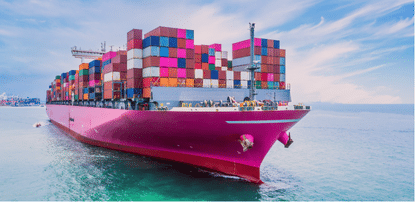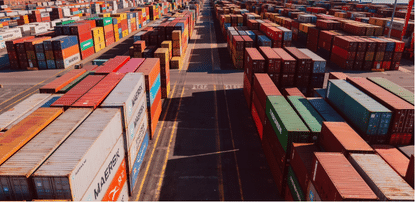
Exporting is an excellent way to expand and grow your business!
Exporting is an excellent way to expand and grow your business!
Increased Sales
Nearly 95% of the world’s population resides outside of the United States, which means the additional sales growth is very likely from exporting.
Knowledge and Experience
The knowledge gained from exporting to one country can often be applied to other regions of the world.
Higher Profit Margins
Niche or specialty products may face less competition, and therefore, sell for a higher price. Additionally, export sales volumes are often larger than the domestic equivalent.
Economies of Scale
By producing at capacity, fixed costs are lowered per unit, especially if little or no adaptation is required.
Reduced Risk
Exporting diversifies risk and helps protect business in the event of a domestic slow-down.
Public Relations
Exporting success creates manufacturing jobs and success stories that may be of interest to local media.

Exports of consumer food products are growing 3x faster than sales here in the U.S. They have soared in recent years in response to consumers’ growing purchasing power and lower trade barriers. Exports of consumer-ready food products still suggest a long-term upward trend, having grown 10% between 2016 and 2019. An increase of $6.3 billion, or nearly $1.6 billion a year in growth of consumer food exports on an annual basis.
It’s a popular misconception that only large companies can succeed overseas. Indeed, many small companies have found that their competitive advantage lies in some form of technological or creative advantage. Many have “unique” or “niche-type” products that are always in demand overseas!


As of 2020, 15+ Free Trade agreements with over 20 different countries have been created to help decrease America’s trade deficit. These trade agreements have lowered many trade restrictions for U.S. products, giving U.S. exporters an unprecedented level of access to many international markets. These reductions have helped all U.S agricultural exporters, but in many instances have been particularly advantageous for exporters of value-added food and agricultural products.
Many companies shy away from exporting because they don’t know how or where to get started. Fortunately, help is available! Food Export-Midwest, Food Export-Northeast, your local state agricultural promotion agency and other export providers can provide your company with a wide range of export assistance to help introduce you to the world of exporting.
Learn more about the Export Education, Market Entry, and Market Promotion programs we have available to see how they can help you become a more experienced exporter.
To read about some of the successes our participants have had using our programs, visit our Success Story page.


Consumer preferences, shaped primarily by incomes, changing lifestyles, and evolving cultural preferences, largely determine the items available in grocery stores in different markets. In developing-country markets, higher incomes result in diet upgrades, with increased demand for meats, dairy products, and other higher value food products. These include packaged cereals, pasta, oils, and other items used in meal preparations.
Another contributor to the growth in value-added food exports is U.S. food exporters’ competitive advantage in food processing. U.S. and Western Europe are considered to have the largest amounts of food and manufacturing centers. Many U.S. firms lead the way in adopting new technologies and in meeting the ever-changing consumer demand and trends, making them better able to customize their products for foreign consumers. Many are thus able to supply the types of foods products that are most in demand, including convenience foods like home meal replacement items, private label products, and niche-type products such as organic and functional products.
